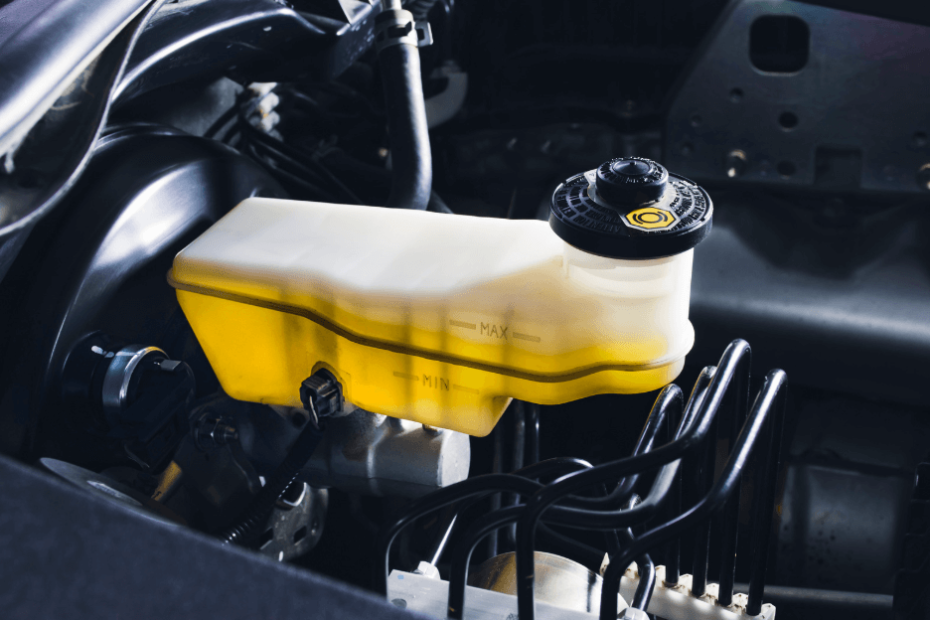You know that feeling when you’re driving and need to stop suddenly, and your brakes respond perfectly?
That’s partly thanks to your brake fluid. Over time, however, that fluid can degrade, and that’s when it’s time to consider a brake fluid exchange.
But how much does a brake fluid exchange cost? Typically, it ranges between $80 and $150 depending on your car’s make and model.
However, this price may vary if you visit places like Firestone or Jiffy Lube.
I’ll break down everything for you here so you’ll know exactly what to expect.
Why Is Brake Fluid Exchange Important?
Think of your brake system like a chain. If one part weakens, the whole system suffers. Your brake fluid absorbs moisture over time, which can lead to rust and decreased braking performance. In extreme cases, ignoring this can make your brakes fail altogether.
Swapping out the old fluid for new fluid prevents these issues, ensuring your brakes work reliably. It’s a small cost to pay for safety and peace of mind.
How Often Should You Get a Brake Fluid Exchange?

It depends on your car and how you drive it. Most manufacturers recommend a brake fluid exchange every two to three years or 30,000 miles.
If you’re constantly driving in stop-and-go traffic or live in a humid climate, you might need it sooner. High moisture in the air can speed up the degradation of brake fluid.
Don’t wait for your dashboard to light up with a warning. Regular checkups can save you a lot of trouble.
What Affects the Cost of Brake Fluid Exchange?
1. Vehicle Type
High-performance or luxury cars often have specialized brake systems that require more expensive fluid and extra labor time.
If you’re driving a common sedan, your cost may be on the lower end of the spectrum.
2. Location
If you live in a big city where labor costs are higher, expect to pay more. Conversely, smaller towns usually have more affordable rates.
3. Service Provider
Different shops have different prices. For example, Firestone brake fluid exchange costs are often competitive and include a warranty on parts and labor.
Jiffy Lube brake fluid exchange costs may also be reasonable but vary by location.
4. Additional Services
Some service centers bundle other inspections (like checking brake pads and rotors) with the fluid exchange, which can increase the price.
How Much Should a Brake Fluid Exchange Cost at Major Chains?
Firestone Brake Fluid Exchange Cost
At Firestone, you might pay anywhere from $100 to $150. They often include a full brake system check in the price, making it a solid choice for comprehensive care.
Jiffy Lube Brake Fluid Exchange Cost
Jiffy Lube typically charges between $80 and $120, depending on your location. They’re known for their speed, so if you’re short on time, this could be a convenient option.
Dealership vs. Independent Shops
Dealerships tend to charge more, often around $150 to $200, but you’re getting factory-trained technicians who specialize in your car make and model.
Independent shops, on the other hand, might offer the same service for $80 to $130 without sacrificing quality.
Can You Save Money on a Brake Fluid Exchange?

Absolutely! Here are some tips:
1. Look for Coupons and Promotions
Many service providers, including Firestone and Jiffy Lube, regularly offer discounts. Check their websites or apps for promotions.
2. Shop Around
Get quotes from multiple shops. Prices can vary significantly even within the same city.
3. Ask About Bundles
Some shops offer discounts if you bundle other services, like an oil change or tire rotation, with the brake fluid exchange.
4. Avoid Unnecessary Upsells
Stick to what your car needs. Some service centers might try to push extra services you don’t immediately require.
Signs You Need a Brake Fluid Exchange
Sometimes your car will give you hints that it’s time for a brake fluid exchange. Here are a few signs to watch for:
1. Spongy Brake Pedal
If your brake pedal feels soft or spongy when you press it, air or moisture might be trapped in the brake lines.
2. Poor Braking Performance
Does it take longer for your car to come to a stop? Contaminated brake fluid can reduce your braking power.
3. Warning Light
Your dashboard’s brake warning light may turn on, especially if the brake fluid level is low.
If you notice any of these symptoms, don’t wait. Have your brakes inspected immediately.
What Happens During a Brake Fluid Exchange?
You’re probably wondering what goes on behind the scenes. During a brake fluid exchange, the technician will:
- Drain the old, contaminated fluid from the system.
- Inspect the brake lines and other components for damage or leaks.
- Refill the system with fresh, manufacturer-recommended brake fluid.
- Bleed the brakes to remove any air bubbles.
- Test the brakes to ensure they’re working perfectly.
This process usually takes about 30 minutes to an hour.
Can You Do a Brake Fluid Exchange Yourself?
Technically, yes, but it’s not something I’d recommend unless you’re experienced with car maintenance.
Brake systems are sensitive, and mistakes can lead to serious safety risks.
If you’re determined to DIY, make sure you have the right tools and follow your car’s service manual closely.
To Sum Up
Brake fluid exchange is a crucial part of car maintenance. It’s not just about cost; it’s about safety.
By keeping your brake fluid fresh, you’re ensuring that your car can stop when it needs to, protecting both you and your passengers.
If you’re due for a service, don’t hesitate. Your safety is worth every penny.
